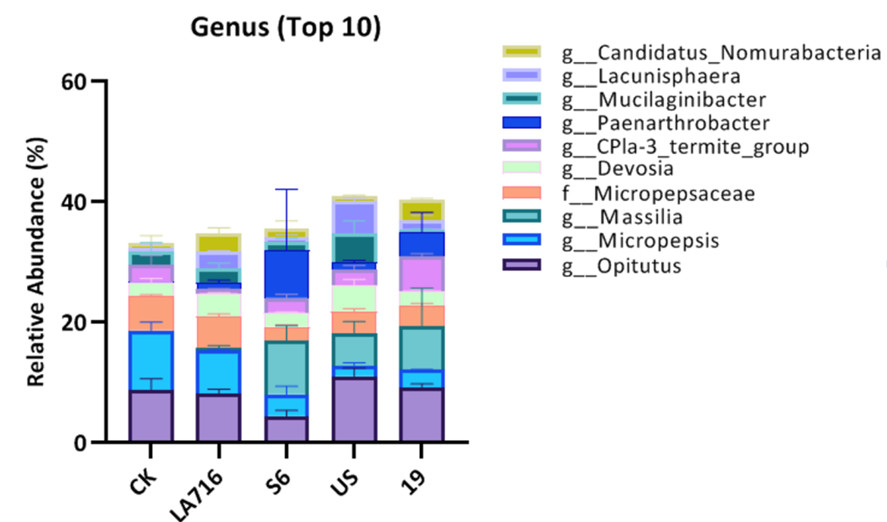- Promotion of demonstration sites for the recycling of tomatoes, mushroom media and tea by-products
- Promote to Popular Application of Intelligent Production and Sales Management in Vegetable Nurseries
- Research on Seedling Propagation Technology of Eastern Aboriginal Tribes
- Counseling on Digital Transformation of Small,Medium and Micro-sized Agricultural Operators of Crops and Seedlings with Potential for Export
- Construction of Environmental Verification System and Standards for Cucurbit Vegetables Nurseries
- Promotion of Taro Healthy Germplasm Conservation and Propagation System
- Research on the New Development Trend of Seed Treatment Technology
- Evaluation and Application of Drought-tolerant Potato Germplasm Resources
- Establishment the Biological Indicator of Disease Resistance for Tomato in Drought Condition
- Improvement on the Micropropagation Technique – In Vitro Propagation of Avocado (Persea americana Mill.) through Apical Buds and Nodal Segments
- Research on germplasm maintenance and industrial application of vegetative propagation crops
- Germplasm Development and Application of Aeridinae Orchids and Cattleya Alliance
- Research on Genetic Resources and Plant New Variety DUS Testing Techniques Management and Application of the Economical and Special Crops in Taiwan
- Next-generation Ark of Agriculture and Forestry Germplasm - Germplasm Regeneration of Important Cross-Pollinated Crops
- Establishment of organic seed production and supplying system for grain crops
- Techniques development for bulb flowers breeding
- Establishment of the HeatResistant Selection Index and Breeding of Tomato
- High Quality and Stress Tolerance Breeding in Tomato
- Establish Cucurbitaceae vegetable breeding technologies of heat tolerance
- Breeding of New Papaya Variety for the International Market
- Research on the behavioral intentions of Agricultural Social Responsibility of the trainees in Farmers' Academy
- Research on the Interpretation of AI Intelligent Distinctness, Uniformity and Stability (DUS) Test in Phalaenopsis
- Exchange and Cooperation on Propagation, Breeding Technology and Plant Variety Protection of Ornamental Bulbs and Medicinal Plants between Taiwan and South Africa
 Home > Achievement > 2023 Research Project List > Establishment the Biological Indicator of Disease Resistance for Tomato in Drought Condition Home > Achievement > 2023 Research Project List > Establishment the Biological Indicator of Disease Resistance for Tomato in Drought Condition |
Establishment the Biological Indicator of Disease Resistance for Tomato in Drought Condition
Climate change and drought have significant effects on crop growth, with reduced rainfall and changing precipitation patterns, including sudden heavy rain or prolonged drought, causing damage to plant growth. The supply of water is identified as the most critical environmental factor influencing crop growth. Tomato, a globally important vegetable crop, occupies nearly 6 million hectares of cultivation worldwide, with an annual production exceeding 200 million tons. The production process is severely affected when subjected to water scarcity conditions.
This project investigates key growth indicators of tomato plants under water deficit conditions to determine criteria for tomato water deficiency. It also analyzes the microbial community in the root zone, aiming to identify microorganisms that could serve as targets for drought-tolerant crop monitoring or even contribute to strategies for mitigating drought.
The experimental results reveal that using the severity rating of early blight as a visual criterion for plant wilting correlates significantly with plant growth conditions (dry weight, plant water content) and soil moisture content. This suggests that wilting rate could be used as an initial indicator for drought tolerance. Based on these indicators, 11 tomato varieties (lines) were screened, identifying the most drought-tolerant (LA716, S6) and least drought-tolerant (US, TN-AV_19, TY-AV_20).
DNA from the root zones of drought-tolerant and non-drought-tolerant varieties was subjected to next-generation sequencing for microbial community analysis. The results showed a total classification of 24 phyla, 60 classes, 142 orders, 216 families, 330 genera, and 544 species in the microbial community. In the microbial community of the drought-tolerant variety S6, the family Micrococcaceae, particularly the Paenarthrobacter, was predominant. Some species in this genus are known for promoting plant growth, enhancing plant stress tolerance, and exhibiting resistance to plant pathogenic fungi. This suggests their potential as priority targets for future research.
|
|
|
|
 ▲Fig. 3. Investigation of wilting rates among different tomato varieties under treatment with different strains of bacteria and various durations of water withholding is shown in the left figure for water treatment, the middle figure for treatment with P. ureafaciens strain 7, and the right figure for treatment with P. ureafaciens strain 14. |


